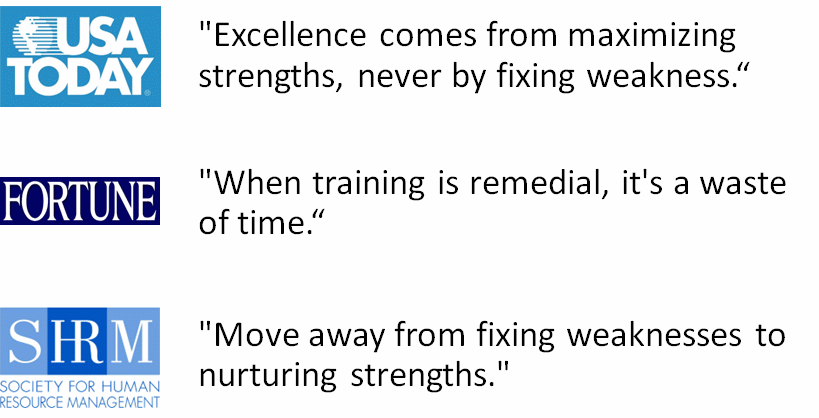I was told a telling story by my friend, David Peterson, who is if not the father of executive coaching then at least its cool uncle. The story goes back to before he went to Google to lead its coaching and leadership development practice, but takes place nearby.
David was reviewing the design for a high-potential program with the global head of talent at another darling Valley company. As he explained how assessments would identify strengths and weaknesses, the head of talent interrupted to say, “I’m sorry, we don’t talk about weaknesses here; we speak the language of strength.” A bit perplexed, David asked, “So how do you refer to those skills and competencies a manager doesn’t do very well?” The talent executive answered, in all sincerity, “We call those lesser strengths.”
For the past 20 years, the field of talent management has been seduced by easy answers and the promise of a quick fix to close the leadership talent gap. More and more, reputable sources are following the “gurus” and admonishing us to stop wasting time trying to improve weaknesses and instead focus on strengths:

In today’s complex world, the desire for simple solutions is understandable. But there is a difference between simple and simplistic. That’s the problem with the strengths movement: it’s feel-good story line relies on oversimplifications, half-truths, and empty promises when applied to leadership development. As if labeling poor people skills a “lesser strength” will neutralize the demoralizing effect a manager’s boorish behavior has on employees.
For a more complete understanding of strengths-based development and some of its less-obvious problems, you may find this article in Talent Quarterly useful.